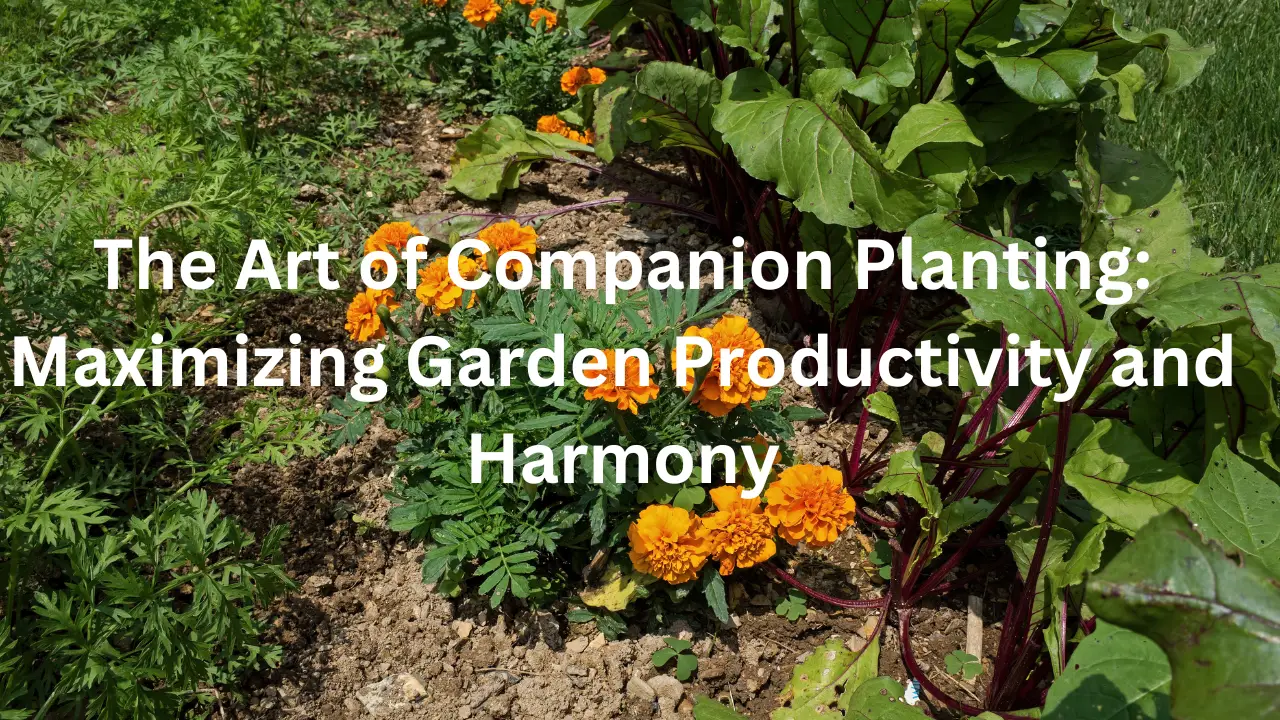Gardening is not just about planting and tending to individual plants; it’s about creating a vibrant ecosystem where plants support and thrive off each other. One powerful technique that harnesses the natural symbiosis of plants is companion planting. This age-old gardening practice involves strategically pairing certain plants to enhance their growth, deter pests, and maximize overall garden productivity. In this article, we will delve into the world of companion planting and explore its benefits, popular combinations, and essential tips for implementing it in your own garden.
- Understanding Companion Planting:
Companion planting is based on the principle that certain plants have beneficial effects on neighboring plants when grown together. They can provide pest control, improve soil fertility, attract beneficial insects, and even enhance flavor in edibles. By carefully selecting and arranging plant combinations, gardeners can create a harmonious environment where each plant thrives and contributes to the overall success of the garden.
- Companion Planting Combinations:
a. Three Sisters: The classic Native American trio of corn, beans, and squash showcases the power of companion planting. Corn provides support for the beans, which fix nitrogen in the soil, benefiting all three plants. Meanwhile, the sprawling squash leaves create a living mulch, suppressing weeds and conserving moisture.
b. Tomatoes and Basil: Tomatoes and basil are well-known companions. Basil repels tomato hornworms and whiteflies, while tomatoes enhance the flavor of basil. Planting them together can lead to healthier plants and more flavorful harvests.
c. Marigolds and Vegetables: Marigolds emit a scent that repels many common garden pests, including nematodes. Planting marigolds alongside vegetables like tomatoes, peppers, and cucumbers can help keep pests at bay and protect your crops.
- Tips for Successful Companion Planting:
a. Plan your garden layout: Consider the growth habits, light requirements, and spacing needs of different plants to ensure they are compatible and won’t compete for resources.
b. Rotate plant families: To prevent the buildup of pests and diseases, rotate crops from the same family each year. For example, avoid planting tomatoes in the same spot every season.
c. Mix flowers and herbs: Integrate flowers and herbs throughout your garden to attract beneficial insects, such as bees and ladybugs, which aid in pollination and pest control.
d. Research plant companions and incompatibilities: Some plants have negative interactions, so it’s important to do your homework before planting. For instance, avoid planting onions near beans, as they can hinder each other’s growth.
- Beyond Companion Plants: Diversity and Sustainability:
Companion planting is just one aspect of cultivating a diverse and sustainable garden. By incorporating a variety of plants, utilizing organic practices, and maintaining a balanced ecosystem, you can reduce the need for chemical interventions and foster long-term garden health.
Conclusion:
Companion planting is both an art and a science, allowing gardeners to harness the power of plant interactions for increased productivity and harmony. By exploring different combinations, implementing thoughtful garden layouts, and embracing diversity, you can create a thriving garden ecosystem that not only produces bountiful harvests but also supports the overall health of your plants. Embrace the art of companion planting and watch your garden flourish like never before.

